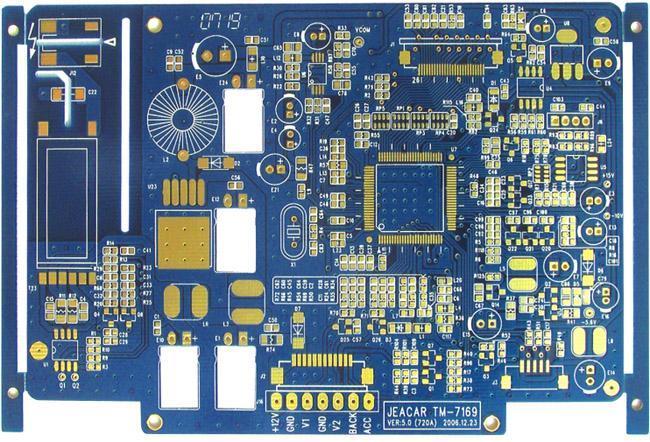PCBA will appear in almost every kind of electronic equipment. It is the carrier of all electronic equipment. PCBA is everywhere in the computer, from household appliances in daily life to automotive electronic equipment. PCB board applications are indispensable. . So what materials are needed in the PCB board manufacturing process? Let's take a look at it together.
1. Substrate
The original material of the printed circuit board is the copper clad substrate, referred to as the substrate. The substrate is a resin board with copper on both sides. Now the most commonly used board code is FR-4. FR-4 is mainly used for high-grade electronic products such as computers and communication equipment. Requirements for the board: one is the flame resistance, the other is the Tg point, and the third is the dielectric constant. The circuit board must be flame-resistant, cannot burn at a certain temperature, but can only be softened.

2. Copper foil
Copper foil is a conductor that forms wires on a substrate. There are two methods for manufacturing copper foil: calendering and electrolysis.
3. PP
PP is an indispensable raw material in the production of circuit boards, and its function is the adhesive between layers. Simply put, the substrate sheet in the b-stage is called PP. The specification of PP is the thickness and the amount of glue (resin).
4. Dry film
Photosensitive dry film is abbreviated as dry film. The main component is a resin material that is sensitive to a specific spectrum and undergoes a photochemical reaction. A practical dry film has three layers, and the photosensitive layer is sandwiched between two protective layers of plastic film. According to the chemical characteristics of photosensitive materials, there are two types of dry film, photopolymerization type and photodecomposition type. The photopolymerization type dry film will harden under the light of a specific spectrum, and change from water-soluble substance to water-insoluble, while the photodegradability is just the opposite.
5. Anti-solder paint
Solder resist is actually a kind of solder resist. It is a liquid photosensitive material that has no affinity for liquid solder. Like photosensitive dry film, it will change and harden under the light of a specific spectrum. When in use, the solder resist should be mixed with the hardener for use. Solder resist is also called ink. The color of the PCB board that we usually see is actually the color of the solder mask.
6. Negatives
The negatives we are talking about are similar to photographic negatives, which are materials that use photosensitive materials to record images. The customer sends the designed circuit diagram to the circuit board factory, and the CAM center workstation outputs the circuit diagram, but not through a common printer, but a light plotter. The role of the negative film in the circuit board factory is very important. All things on the substrate must be turned into a negative film by using the principle of image transfer.
There is a magic way to know the components on the PCB
1. In the actual analysis of PCB, first of all, according to its appearance, see what components the component looks like before. However, the accuracy of this point is not high.
2. Secondly, it is identified by the printing of the component itself. Generally speaking, the printing expresses certain parameters or models. Of course, there are also attributes such as the manufacturer's batch number and version number. Some even have symbols that have passed international certification. This method is also Rely on the usual understanding of component models, parameters, etc.
For example, a triode-like device, marked C1815 is a low-power low-frequency NPN transistor; marked TL431 is an integrated voltage regulator IC; if marked 13001, it is a low-power switch tube, which can be used in a small low-power charger.
Once again, you can disassemble the components to see the internal structure. This point encourages friends to try more, the more the better.
A certain type and series of components have the same or similar structural characteristics, and they have been disassembled more. They are also more familiar with the internal structure and working principles of the components. You can disassemble as many components as possible to further improve your basic component knowledge.
3. If the component is on the PCB, it can be judged according to the component symbol and silk screen on the PCB. If it is marked R12, it is a resistance, which is numbered 12 in the circuit. X, Y, and Z can all represent crystal oscillators, and at the same time, the function of components can be judged according to the circuit in which they are located, and then the types of components can be analyzed, which requires you to be familiar with the basic circuit.
Due to technology, production and manufacturer reasons, the same kind of components will have different shapes, structures, and materials. This will bring you some difficulties when analyzing PCBs. If conditions permit, you can go to specialized electronic component shops and electronics. Take a look at the city and learn more about it. This will be of great help to your knowledge accumulation.